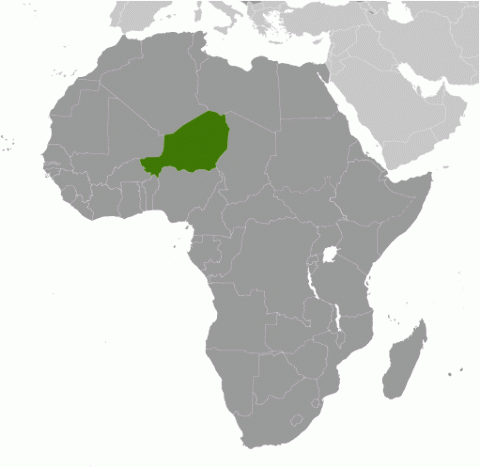Child Labor and Forced Labor Reports
Niger


Moderate Advancement
In 2024, Niger made moderate advancement in efforts to eliminate the worst forms of child labor. The government provided rehabilitation services to at least 61 children formerly associated with non-state armed groups, including psychosocial services, deradicalization sessions, vocational training, and reintegration into their communities. They also held capacity-building workshops on human trafficking enforcement and victim protection in the Tahoua, Zinder, Maradi, and Tillaberi regions, whose participants included mayors, police officers, magistrates, social workers, child protection and immigration officials, and representatives of non-governmental organizations. In addition, the government adopted a National Strategy to Combat Begging, which aims to address child begging both inside and outside Niger. However, despite these efforts, Niger’s education laws do not meet international standards because they do not establish an age to which education is compulsory and only guarantee access to free education up to Basic Cycle 1, which may end as early as age 12. The government also made limited efforts to address the ongoing practice of wahaya, a form of child slavery that was upheld as illegal by a Nigerien court in 2019. The government conducted worksite inspections but identified zero child labor violations during the reporting period.
| Children | Age | Percent and Population |
|---|---|---|
| Working | 5 to 14 | 42.9% (2,516,191) |
| Hazardous Work by Children | 15 to 17 | Unavailable |
| Attending School | 7 to 14 | 48.0% |
| Combining Work and School | 7 to 14 | 22.1% |
| Sector/Industry | Activity |
|---|---|
| Agriculture | Working in farming, including planting, harvesting, transportation, and sale of produce, with exposure to pesticides, fertilizer, sharp tools, and carrying heavy loads. Herding and caring for different forms of livestock. Working in fishing, including river net casting. |
| Industry | Quarrying† and mining† for trona, salt, gypsum, and gold. Working in construction,† tanneries,† slaughterhouses,† and metalworking.† |
| Services | Domestic work and street work as vendors and beggars.† Garbage scavenging. |
| Categorical Worst Forms of Child Labor‡ | Commercial sexual exploitation, sometimes as a result of human trafficking. Hereditary and caste-based slavery, including for cattle herding, agricultural work, domestic work, and sexual exploitation. Forced labor in domestic work, begging, and mining. Use in illicit activities, including trafficking drugs. Recruitment of children by non-state armed groups for use in armed conflict. |
† Determined by national law or regulation as hazardous and, as such, relevant to Article 3(d) of ILO C. 182.
‡ Child labor understood as the worst forms of child labor per se under Article 3(a)–(c) of ILO C. 182.
Children at Higher Risk
Children in Niger, especially boys and girls from the Djerma, Peulh, Tuareg, and Toubou ethnic minorities, continue to be exploited in slavery and endure slavery-like practices, particularly in the regions of Tillaberi, Tahoua, and Agadez, and the areas near the border with Nigeria. Some children are born into slavery while others are born free but remain in a dependent status and are forced to work with their parents for their former masters in exchange for food, money, and lodging. A particular form of slavery in Niger is the wahaya practice, in which men buy girls born into slavery, often between ages 9 and 14, as “fifth wives” for exploitation in forced labor. Even though Niger’s Supreme Court set a legal precedent by ruling wahaya to be illegal in 2019, the government has made limited efforts to publicize and enforce of the court’s ruling. Child slavery victims, including those exploited in wahaya, are forced to work long hours as cattle herders, agricultural workers, or domestic workers, and are often sexually exploited. As with those involved in hereditary slavery, the children of wahaya wives are considered enslaved, and are passed from one owner to another as gifts or as part of dowries. In addition, some Koranic teachers subject their students, boys between the ages of 6 and 17, known as talibés, to long hours of forced begging and forced labor, as well as to degrading living conditions. Observers estimate that at least 76,000 boys are exploited in this manner in Niger.
Barriers to Education Access
Although Nigerien law guarantees free basic education, children require identity documents, including birth certificates, to attend school. Children who lack documentation and refugee children who are not formally registered with the government are denied access to education. Public schools are free, but administrative fees and indirect costs pose barriers for the poorest families. A lack of school infrastructure and school materials, and the limited availability of teachers, especially in rural areas, impedes access to education, which may increase the vulnerability of children to child labor. Furthermore, schools do not have the resources to educate children with disabilities, placing them at higher risk of dropping out and making them more vulnerable to the worst forms of child labor.
| Standard | Age | Meets International Standards | Legislation |
|---|---|---|---|
| Minimum Age for Work | 14 | ✓ | Articles 3 and 106 of the Labor Code |
| Minimum Age for Hazardous Work | 18 | ✓ | Article 159 of Decree No. 2017-682 |
| Identification of Hazardous Occupations or Activities Prohibited for Children | ✓ | Articles 159–161 and 164–171 of Decree No. 2017-682; Article 181 of the Penal Code | |
| Prohibition of Slavery, Debt Bondage, and Forced Labor | ✓ | Articles 4, 107, 337, and 343 of the Labor Code; Article 158 of Decree No. 2017-682; Articles 269–270.4 of the Penal Code; Articles 2 and 10 of the Law on Combating Trafficking in Persons | |
| Prohibition of Child Trafficking | ✓ | Articles 107 and 343 of the Labor Code; Article 158 of Decree No. 2017-682; Articles 269–270.4 of the Penal Code; Articles 2 and 10 of the Law on Combating Trafficking in Persons | |
| Prohibition of Commercial Sexual Exploitation of Children | ✓ | Articles 107 and 343 of the Labor Code; Article 158 of Decree No. 2017-682; Articles 291 and 292 of the Penal Code; Articles 2 and 10 of the Law on Combating Trafficking in Persons | |
| Prohibition of Using Children in Illicit Activities | ✓ | Article 107 of the Labor Code; Article 158 of Decree No. 2017-682; Article 181 of the Penal Code; Articles 10 and 16 of the Law on Combating Trafficking in Persons | |
| Minimum Age for Voluntary State Military Recruitment | 18 | ✓ | Article 107 of the Labor Code |
| Prohibition of Compulsory Recruitment of Children by (State) Military | N/A* | ||
| Prohibition of Military Recruitment by Non-state Armed Groups | ✓ | Article 107 of the Labor Code | |
| Compulsory Education Age | ✗ | Article 8 of Decree No. 2017-935 | |
| Free Public Education | ✗ | Article 8 of Decree No. 2017-935; Articles 2, 17–21, and 60 of the Law on the Orientation of the Educational System |
* Country has no conscription
While Article 8 of Decree No. 2017-935 states that the government “must ensure access to and the promotion of free, quality, compulsory public education for the benefit of all children,” Niger’s laws do not specify an age to which education is compulsory or guarantee access to free education beyond Basic Cycle 1, which may end at age 12, for all children.
| Organization/Agency | Role & Activities |
|---|
| Ministry of Civil Service, Labor, and Employment (MFPTE): Enforces labor laws and investigates Labor Code infractions, including those related to child and forced labor. Conducts awareness-raising programs to address child labor. |
| Morals and Minors Brigade: Investigates criminal cases involving minors, including issues pertaining to human trafficking, commercial sexual exploitation, and hereditary slavery. Functions within the National Civil Police Force, which is housed under the Ministry of Interior and Public Security. In 2024, the government held five capacity-building workshops on human trafficking enforcement and victim protection in the Tahoua, Zinder, Maradi, and Tillaberi regions. Participants included police officers, magistrates, social workers, child protection and immigration officers, National Guard representatives, and over 100 mayors. |
| Overview of Enforcement Efforts | 2024 |
|---|---|
| Has a Labor Inspectorate | Yes |
| Able to Assess Civil Penalties | Yes |
| Routinely Conducted Worksite Inspections | Unknown |
| Unannounced Inspections Permitted | Yes |
| Has a Complaint Mechanism | Yes |
| Imposed Penalties for Child Labor Violations | No |
| Conducted Criminal Investigations for Worst Forms of Child Labor Crimes | Yes |
| Imposed Penalties for Worst Forms of Child Labor Crimes | Unknown |
In 2024, 22 labor inspectors conducted an unknown number of worksite inspections and found 0 child labor violations. It is also unknown how many investigations into suspected cases of the worst forms of child labor were conducted, prosecutions were initiated, and perpetrators were convicted.
| Coordinating Body | Role & Activities |
|---|
| National Steering Committee to Combat Child and Forced Labor: Led by MFPTE, includes 17 Nigerien ministries and agencies tasked with finalizing the next phase of Niger’s National Action Plan to Combat Child Labor. Also intends to develop a new hazardous work list. However, the Steering Committee did not undertake activities during the reporting period due to lack of government and ILO funding, and the government has not yet approved the National Action Plan. |
| Policy | Description & Activities |
|---|
| National Social Protection Strategy: Aims to improve the quality of, and access to, basic education and health services; includes strategies to address child labor. Overseen by the Ministry of Health’s Directorate General for the Promotion of Women and Child Protection. In June 2024, the government launched a birth registration campaign to ensure that children, including refugees, have the identity documents they need to access social services, including education. |
| National Strategy to Combat Begging:* The government adopted a national strategy to combat begging in 2024, which includes the aim of addressing the exploitation of child begging both inside and outside Niger. |
| National Strategic Plan to End Child Marriage: Aims to eliminate child marriage, which includes the slavery-like practice wahaya, through a multi-pronged approach: by improving girls’ access to education, protection, and social services to create alternatives to early marriage; educating parents and community members about the importance of alternatives to early marriage; and offering opportunities for social dialogue through open public debate to facilitate the social shift necessary to eliminate harmful practices. During the reporting period, the government conducted capacity-building and training activities for over 2,000 child protection stakeholders across the country, including social workers, Village Child Protection Committee members, and civil registry officers, and implemented awareness campaigns to end child marriage in 320 villages, reaching 79,204 community members. |
* Policy was approved during the reporting period.
† The government had other policies that may have addressed child labor issues or had an impact on child labor.
| Program | Description & Activities |
|---|
| Disarmament, Demobilization, Reintegration, and Reconciliation Program: Ministry of Interior program implemented with the support of the International Organization for Migration and other partners to demobilize and rehabilitate members of violent extremist organizations, including children. Aims to reduce the likelihood of a resurgence in violence while offering living alternatives to former combatants. Operates in the regions of Diffa, Tahoua, Tillaberi, and Zinder, providing psychosocial counseling, deradicalization sessions, vocational training, and community reintegration support. In September 2024, the government welcomed the first group of defectors, including 18 children, to the new Hamdallaye rehabilitation center in Tillaberi Region. Other centers provided services to at least 43 additional children during the reporting period. |
| Shelters for Trafficking Victims: Operated by the government in partnership with international organizations. Consist of 13 centers across Niger, including 6 transit centers. Provide shelter and short training programs for children and young people removed from human trafficking and conduct risk assessments to determine whether a child’s family is involved in their exploitation before returning the child to his or her family. Also serve young people vulnerable to trafficking, including children begging in the streets and girls forced into prostitution. In 2024, the government created an infirmary at the Zinder shelter to expand services available to survivors. |
| UNICEF Programs: Multifaceted humanitarian assistance delivered in partnership with local and international NGOs, government ministries, and local authorities. Education initiatives include formal and non-formal instruction, vocational training, mentoring programs for adolescent girls at risk of leaving school, facility rehabilitation to improve access, and materials for students. Child protection initiatives include family reunification for children separated from their families, which reduces their risk of labor or commercial sexual exploitation, as well as medical, psychosocial, and legal assistance services for victims of exploitation. In 2024, education programs reached 138,406 children and reunification initiatives reunited 11,333 children with their families. |
† The government had other social programs that may have included the goal of eliminating child labor.
| Area | Suggested Action |
|---|---|
| Legal Framework | Establish a compulsory education age equal to the minimum age for work of 14 years, and ensure all children are guaranteed free basic education, regardless of test scores or grades. |
| Enforcement | Ensure that inspections and enforcement efforts take place in the informal sector, and in remote locations, where most child labor occurs. |
| Collect and publish complete information and data on the government’s enforcement of child labor laws, including the number of worksite inspections conducted, violations found, and penalties imposed and collected. | |
| Increase the number of labor inspectors to 234 to ensure adequate coverage of a labor force of approximately 9.3 million workers, and ensure that inspectors receive sufficient financial, material, and training resources to accomplish their mandate. | |
| Increase the number of criminal investigators to provide adequate criminal enforcement coverage, and increase training and material resources for criminal enforcement personnel. | |
| Publish complete information on the number of criminal investigations, prosecutions, and convictions related to the worst forms of child labor. | |
| Adequately enforce the Nigerien Supreme Court’s ruling banning the practice of wahaya. | |
| Prosecute and, where appropriate, convict teachers at Koranic schools who exploit children in forced labor or forced begging. | |
| Ensure that survivors of slavery and slavery-like practices are returned to their families, and have access to reintegration services, as appropriate, including educational opportunities and counseling. | |
| Coordination | Ensure that the National Steering Committee to Combat Child Labor and Forced Labor is active and publish its activities on an annual basis. |
| Government Policies | Adopt and implement a national action plan to address child labor practices, including in mining, agriculture, and hereditary slavery. |
| Publish information about efforts to implement policies related to the worst forms of child labor, including the National Social Protection Strategy, National Child Protection Strategy, and National Strategic Plan to End Child Marriage, on an annual basis. | |
| Social Programs | Enhance efforts to eliminate barriers and make education accessible for all children, including girls and children in rural communities, by increasing school infrastructure, increasing the number of teachers, and providing more school supplies. |
| Ensure that all children, including refugees, are able to obtain birth certificates, to increase access to education and reduce vulnerability to child labor. | |
| Expand the scope of programs to address the worst forms of child labor, including in agriculture, herding, mining, and caste-based servitude. | |
| Implement a program to assist children exploited by teachers at Koranic schools. | |
| Ensure that government social service providers have sufficient resources and facilities to provide the necessary care to all children withdrawn from forced labor, and publish information on these activities. |







